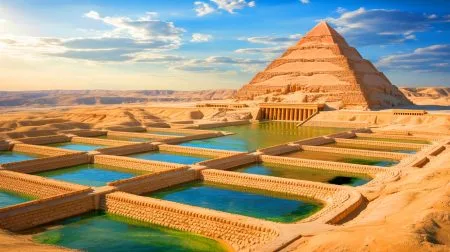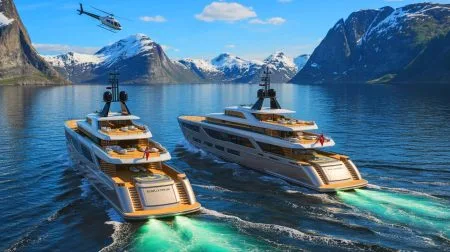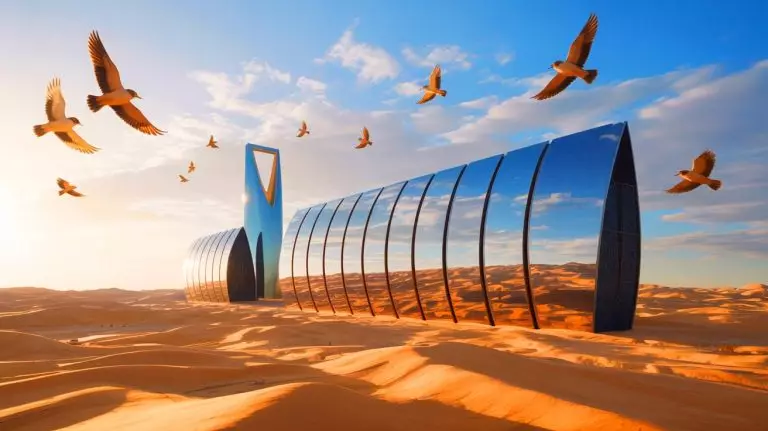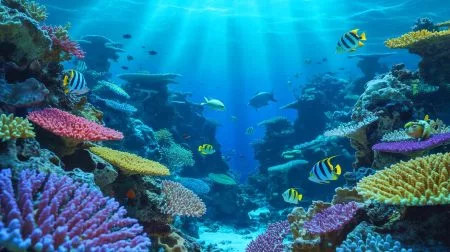| IN A NUTSHELL |
|
In the vast expanse of the Saudi Arabian desert, an ambitious project titled The Line is unfolding, capturing the world’s attention with its promise of a futuristic urban landscape. This groundbreaking endeavor, part of the larger NEOM vision, seeks to redefine urban living through innovative design and sustainable practices. However, as excitement builds, so do concerns regarding the potential environmental impact on the local ecosystem, particularly the threat posed to migratory birds. This bold project raises significant questions about how we balance technological advancement with ecological preservation, challenging us to consider the implications of such grand urban aspirations.
A Monumental Undertaking in the Desert
The NEOM project, a key element of Saudi Arabia’s Vision 2030, aims to transform a vast desert region into a state-of-the-art urban hub. This linear city is projected to stretch 105 miles and soar 1,640 feet into the sky, potentially accommodating up to nine million residents. The Line, with its mirrored facade, promises a fusion of sustainability and cutting-edge innovation. Yet, this grand vision is under scrutiny for its possible impact on local biodiversity, especially the avian population.
Despite the project’s sustainable intentions, internal documents reveal significant concerns about its effect on migratory birds. The towering structure, with its reflective surfaces, poses a considerable risk to these creatures, leading environmentalists to question the feasibility of harmonizing such expansive urban plans with the fragile ecosystems they inhabit. This conflict highlights the broader challenge of balancing urban innovation with environmental stewardship, underscoring the need for careful consideration and planning.
Ecological Concerns Loom Large
Positioned along a major migratory route, The Line presents a substantial threat to billions of birds. The mirrored skyscraper could become a lethal obstacle for these avian travelers. Developers have acknowledged the inevitable impact on bird populations, igniting a debate on the coexistence of urban expansion and wildlife conservation.
The table below illustrates the multifaceted challenges:
| 🦅 Avian Impact | A Threat to Migratory Birds |
|---|---|
| 🏙️ NEOM Project | Desert Transformation into a Futuristic City |
| 🌿 Sustainability | An Ecological Ambition Under Scrutiny |
| 📉 Delays | Cumulative Construction Challenges |
The plight of these birds brings to light broader questions about urban development in environmentally sensitive areas. How can we ensure that our pursuit of innovation does not come at the expense of biodiversity and ecological balance?
Delays and Challenges Abound
The environmental concerns are not the only obstacles facing The Line. The project has been beset by construction delays, with current projections estimating only 300,000 inhabitants by 2030, a figure far short of its ambitious goals. The reality on the ground stands in stark contrast to the envisioned eco-paradise, with progress primarily focused on excavation and foundational work.
Key issues include:
- Construction setbacks
- Balancing nature and urbanization
- Impact on biodiversity
- Project delays
These challenges underscore the complexities of pursuing sustainable construction in fragile environments. The sacrifices required to achieve technological and architectural progress raise important questions about our priorities and responsibilities.
Balancing Innovation and Conservation
As The Line continues to develop, it serves as a poignant example in the ongoing dialogue about sustainable development. The project’s ambitions are as vast as the desert it seeks to transform, yet the environmental cost remains a critical consideration. Balancing innovation with nature’s preservation is essential, ensuring that future generations inherit a world that is both advanced and ecologically sound.
Ultimately, The Line challenges us to reflect on the broader implications of urban development in sensitive environments. How can we effectively balance the scales between technological progress and the preservation of the natural world, ensuring that our future is both innovative and sustainable?
Did you like it? 4.6/5 (29)








Wow, 105 miles long? That’s like a horizontal skyscraper! 😮
I wonder how they plan to manage the heat in a desert city that long. 🤷♂️
It’s ambitious, but the environmental risks seem too high. Is it really worth it?
I think there is a simple answer though.
Ultrasonic Frequencies:
The technology behind silent bird deterrents is based on ultrasonic frequencies, which are sound waves above the 20,000 Hz (20 kHz) range that humans can typically hear.
Sounds like a marvel of engineering, but at what cost to nature?
How are they addressing construction delays? This seems like a huge hurdle.
Why not use this project to innovate new bird-safe designs?
I’m curious about the economic benefits versus the ecological costs. 🤔
Are there any similar projects that have successfully balanced development and conservation?
Seems like a disaster waiting to happen for the birds. What about other wildlife?
Is this project funded by the Saudi government alone, or are there international backers?
Honestly, I doubt they’ll solve the bird problem anytime soon. Such a shame.
Thanks for the detailed report! It’s eye-opening to see the challenges ahead.
105 miles? That’s longer than some countries! 😂
Hope they find a way to make it work without harming the ecosystem.
Are there any alternative routes for the birds, or is this corridor essential?
How will they ensure that the city remains sustainable in the long run?
Not surprised by the delays. These mega-projects always have them.
What’s the projected completion date now with all these setbacks?
Isn’t there technology to make the facade bird-friendly? Maybe something non-reflective?
How is public opinion in Saudi Arabia about this project?
Couldn’t they build smaller, more dispersed urban centers instead?
The mirrored facade looks cool, but mirrors and birds are a bad combo! 🦅💥
Do they have a plan for renewable energy in this project?
Balancing nature with development is tough, but crucial. Thanks for discussing it!
Do they have any partnerships with environmental organizations?
Yikes, this sounds like a big challenge. Hope they figure it out soon.
Great article! But what are the actual steps being taken to protect the birds?
This sounds like a sci-fi movie plot. Are we sure this isn’t fiction? 🤔
Can’t help but think of the poor birds. Such a massive undertaking should have more safeguards!
Thank you for highlighting this issue. It’s crucial to keep environmental impact in mind.